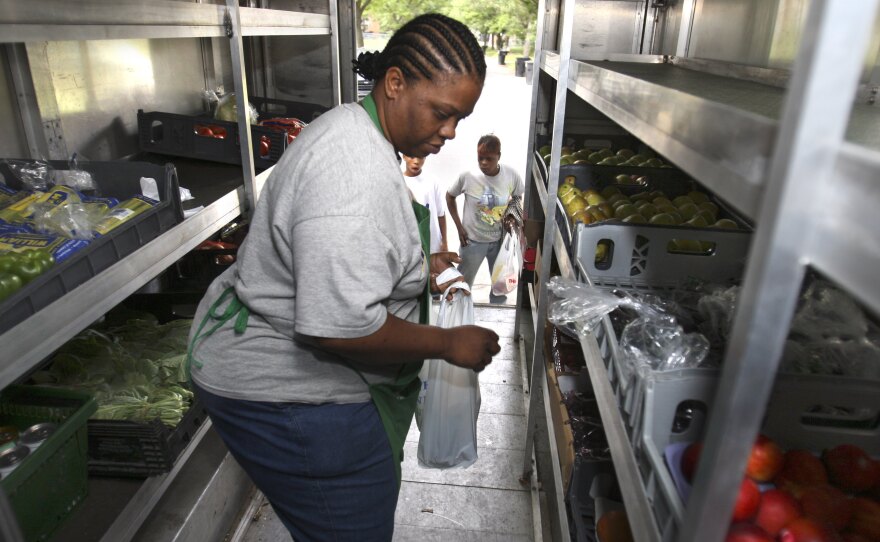
Tens of millions of Americans can't follow the government's guidelines for healthful eating because they can't afford or access enough fresh fruits and vegetables. Sometimes it's because they live in what's known as a "food desert," places devoid of markets with a good variety of quality fresh foods.
Increasingly, researchers want to understand just how the "food environment" -- where people buy food, what food is available, food prices, and how food is marketed to the consumer -- has become the problem. And even as cities from Philadelphia to Chicago to Detroit mobilize to hydrate the food deserts, it's becoming clear that even if you make fresh produce affordable, people may not buy it.
In the latest issue of Choices, a publication of the Agricultural & Applied Economics Association, agricultural economists tackle, among other things, what drives consumer preferences for fruits and vegetables in food deserts. They found that consumers are indeed sensitive to price, and more likely to buy fruit when the price drops. "An effective program would have to heavily subsidize the price to attain a large increase in the consumption of fruit but may not be effective with vegetables," researchers at Michigan State University write. But they note many other factors prevent people in food deserts from buying fruits and vegetables.
The researchers wanted to find out what happens when competitively priced fresh fruits and vegetables are introduced into a food desert community. So they looked at the Piety Hill community of Detroit, where most residents are elderly and low-income.
They chose Piety Hill because of the arrival in 2008 of Peaches & Greens, a mobile produce truck that delivers fresh fruits and vegetables throughout the community; the company also operates a brick-and-mortar store. In 2010 and 2011, Peaches & Greens became the only retailer in Piety Hill to participate in the Double-Up Bucks program, which provides coupons worth up to $20 that can be redeemed only for fresh fruits and vegetables.
The researchers found that people in the Double-Up Bucks program increased their fruit purchases by 67 percent year-over-year, their vegetable purchases by 6 percent, and combined purchases by 56 percent.
On the surface, that sounds successful. But it's not the whole story. Turns out that despite the availability of the coupons, most members of the community never even made it to Peaches & Greens -- in part, because they did not know it was there.
And even if they had known, other obstacles remained: Fewer than 50 percent of those who responded to the community survey had access to a vehicle, cooking facilities, safe food storage, or utilities. All of which help explain why prepackaged foods may seem like an easier option to people in food deserts.
The problem isn't limited to Detroit. According to USDA, around 13.5 million Americans live in areas designated as food deserts -- mostly urban areas.
Copyright 2012 National Public Radio. To see more, visit www.npr.org.






